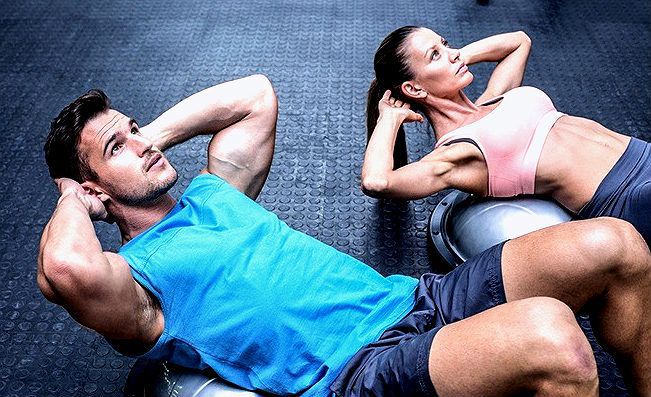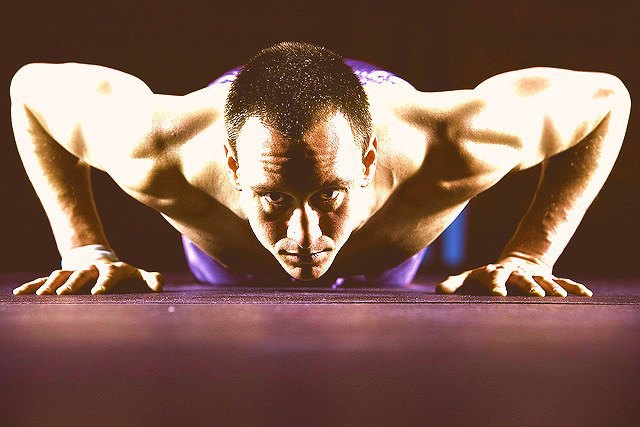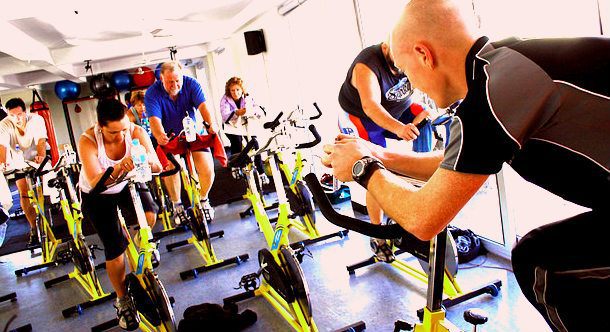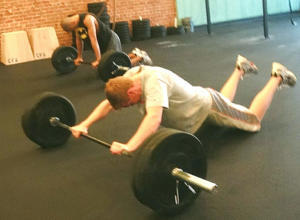High-intensity Interval Training Workouts: Men’s Beginner Guide to Mastering HIIT

Exercise is one of the best ways to avoid health issues and keeping the body healthy. Since exercising daily isn’t realistic for everyone, people tend to cram for weekly exercise. Men are fascinated in keeping a bodybuilding figure, that is, losing excess fat and develop muscle as well. Most of the time, it would turn out into one or two full-packed days’ workout on the weekend. Especially for men who are fond of maintaining their workout regimen so as their voluptuous body.
If you want to burn fat, speed up your metabolism and improve workout conditioning, then you must do high-intensity interval training. Your goal in getting lean and having a great cardiovascular health, then, say goodbye to your long session of grueling workout. Take this beginner guide for you in mastering HIIT.

What is HIIT?
HIIT is a combination of brief, very-high-intensity bursts of cardio exercise followed by equal or longer periods of rest. It is an acronym for “high-intensity interval training”, which pertains to a workout technique about a hard or all-out effort training exercise. Imagine a 30-second to a 1-minute sprinting, followed by a minute or two of walking or slow jogging. Execute this cycle for just 10 minutes, and you’ll complete a HIIT workout.
HIIT sessions are the most effective and time-efficient methods to increase your endurance, burn calories, and improve overall fitness. Make no mistake though, because this type of training is not that easy. HIIT will only work for you when push yourself out of your comfort zone. In other words, the workout is often unpleasantly difficult.
How Does HIIT Work?
Don’t fret when you’re a newbie in HIIT workout when you want to try something new to burn more fat in less time. This is an effective style of training with more fitness benefits that what you used to do in cardio conditioning workouts. HIIT workout is better for preserving muscle and helps curb cravings too.
Study Shows
One small study of healthy but sedentary people found one minute total of HIIT performed in three days a week for six weeks. It was enough to significantly improve blood sugar scores and aerobic capacity. The participants in the study completed 10- to 20-second bouts of “all-out” cycling on a stationary bike, each broken up by a couple minutes of rest. The total workout time, start to finish, was 10 minutes.
Other research finds that HIIT may outperform traditional cardio when it comes to fat loss. A HIIT-induced surge in your body’s levels of growth hormones and other organic compounds can increase fat burning and energy expenditure for hours after exercise.

![]()
Benefits of HIIT Workout
HIIT produces equivalent or greater aerobic endurance improvements as cardio workouts, which take as much as ten times longer to complete. They also improve the anaerobic energy system, which delays the onset of fatigue and muscle burn when performing max-effort activities.
Your body gets better at producing energy when you work at all levels of intensity. The result is improved work capacity—the ability to work at a higher intensity for a longer duration. You are able to work with a greater percentage of your max when you perform your workout or play your sport—and recover faster between exercises or plays.
For this reason, HIIT is the ideal form of conditioning for most athletes. It develops the endurance for repeated Sprints, Jumps and other powerful movements, whereas research shows that cardio workouts may actually make you slower and decrease strength and lean muscle mass.
Weight Loss Benefits of HIIT
Your body naturally burns more calories than it does when you perform lower intensity exercise. But the total work performed in a HIIT workout is limited, so most experts point to the afterburn effect of HIIT.
After a HIIT workout, your body consumes more oxygen to restore spent fuel sources. It repairs itself and adapts to the stress placed on it. In theory, HIIT puts your body in greater oxygen debt than an aerobic workout. A brief HIIT workout should have a greater net energy cost, because it elevates your metabolism more than a longer aerobic workout, due to the afterburn effect, which helps you achieve a caloric deficit—the key to losing weight.
![]()
Other Benefits of HIIT
- HIIT develops nervous system response. It increases parasympathetic activity, the part of your nervous system that slows down your heart rate, improves digestion and reduces stress.
- High-intensity interval workout improves insulin sensitivity. Improved insulin sensitivity helps shuttle more of the food you eat to your muscles, and not store it as fat. Improving insulin sensitivity is one of the keys to preventing diabetes.
- This training workout makes you tougher. Working near your max makes you tougher. It prepares you to withstand grueling workouts and situations during your sport when you’re pushed to the limit.

HIIT Workouts
Another great thing about HIIT is that you can select various types of workouts and perform a wide variety of exercises, depending on your goals. When choosing exercises, remember that HIIT workouts are meant to push you at or near your max. You should choose full-body movements that are difficult to perform for several reps.
You can opt for traditional conditioning exercises like Sprints, or choose full-body strength exercises to build endurance and improve strength at the same time—although you shouldn’t expect massive strength gains from this style of training.
Most importantly, choose an exercise that you have mastered. Make sure to give one hundred percent effort during the exercises. Repeat every other day with the goal of completing it faster each time. So it’s important to have a solid foundation for working at extremely high intensities.
Here are some common exercises to incorporate into HIIT workouts:
-
Sit-Ups
Make at least 50 sit-ups. Lie on your back, knees bent, with your feet on the floor. Tighten your core and using your abs, pull your head and back off the ground until you are sitting upright, with your back completely perpendicular to the floor. Pulling your abs in again, slowly lie back down into start position.
-
Sprints
Sprints are accessible almost to everyone and are an easy way to push your body. For an added challenge, try running up a hill and walking down to start your recovery. Work for 30-second straight and rest for every 4 minutes. The total duration of this workout is 20-30 minutes.
-
Push-Ups

Do it for 30 push-Ups. Get into plank position, hands on the ground directly under your shoulders, legs about hip-width apart. Keeping your elbows tucked against your sides and your body in a straight line, bend your elbows and lower your entire body until it almost touches the ground (as far down as you can). Repeat to start position.
-
Burpees
Burpees are arguably the most challenging full-body exercise, and they’re a staple of CrossFit workouts. The exercise is difficult but be very careful. You should be able to pass some basic strength and mobility tests before considering Burpees.
Start standing and place your hands on the ground and jump your legs backward until they are fully extended. Quickly jump your legs back towards your hands. Stand up quickly and jump with hands raised up to the ceiling. Repeat immediately when you land the jump. Do this for 30 seconds.
-
Jump Squats
Stand with feet shoulder-width apart, arms at your sides. Bend your knees, keeping them in line with your feet, and sit back into a quarter squat). Perform a small jump, and land back in your squat position. Repeat 40 jump squats.

-
Stationary Bikes
Most of the research on HIIT is performed on stationary bikes because they facilitate accurate measures of workload and intensity. For your own workouts, stationary bikes are one of the most widely available pieces of equipment in a gym setting, and they place minimal impact on your joints.

-
Other Body-weight Exercises
Many bodyweight exercises—such as Squats, Squat Jumps, Split Jumps and Bear Crawls—make great HIIT exercise options. However, to avoid too much fatigue, you will have to choose a HIIT workout with short work intervals and longer rest periods—or perform more than one type of exercise.
Related: TOP 10 BEST STIMULANT-FREE PRE-WORKOUT SUPPLEMENTS FOR 2017 (NO CAFFEINE)
5 Myths About HIIT Debunked
You might have heard again and again that high-intensity interval training (HIIT) gets people amazing results in fat loss and fitness training. HIIT pairs high-intensity exercise intervals with low to moderate-intensity exercise recovery phases. As with many other popular fitness and nutrition trends, there are plenty of myths or misconceptions about HIIT workouts. Let’s try to debunk the myths to make sure that you don’t fall victim to any of these mistruths.
MYTH #1: EVERYONE can do a HIIT Workout
Would everyone like to run a marathon? – or even a half marathon? Without training, you wouldn’t probably go all out on a HIIT workout, even overnight. One needs to be careful when starting or restarting an exercise program. Starting a HIIT may increase the chance of injury and muscle soreness. It’s better to start with low-intensity aerobic or fat-burning exercise until you can run for 30 consecutive minutes at a moderate intensity, then gradually.
MYTH #2: HIIT is the only workout you need to lose weight and stay fit
A well-designed strength training program can significantly increase strength, power, athletic performance and physical appearance. However, many people don’t realize the importance of muscle in the fat loss process. Muscle is metabolically active tissue, as it is the physical place in your body where fat is burnt.
The leaner muscle tissue you have, the more calories/fat you’ll burn throughout the day, even while you sleep. Because more muscle tissue requires more energy. That is why strength training and maintaining muscle with proper training and eating strategies is absolutely critical for fat loss. The winning workout plan combines high-intensity interval training with a comprehensive strength training plan.
MYTH #3: More HIIT workouts the better
As the name suggests, high-intensity interval training is intense and pushes your body hard, so it’s important to allow for plenty of recovery time between workouts. You don’t want to do too much throughout the week. Using high-intensity interval training three times per week will give you the best results while limiting the risk of injury.
It’s essential that you let your body rest in between fitness programs and don’t do too much HIIT during the week. As the name implies, HIIT pushes your body hard and is intense interval training. For the best benefits, all you need is to perform HIIT three times each week; any more than that and you’ll be risking an injury.
MYTH #4: HIIT Focuses Only on Cardio
While HIIT focuses on increasing the intensity of your workouts, it doesn’t focus only on cardio. HIIT exercises can involve bodyweight training, weightlifting, and sports-centered workouts for complete muscle exercise instead of just cardio.
MYTH #5: HIIT Will Result in Large Muscle Growth
The purpose of HIIT workouts isn’t to develop massive amounts of muscle but rather to maintain lean muscle. By working to increase your heart rate and prevent muscle breakdown, HIIT methods designed for fitness enthusiasts who are looking to gain muscle mass.
How Many Times a Week Can You do a HIIT Workout?
HIIT workouts are more exhausting compared to steady endurance workouts. Therefore, a longer recovery period is often needed. Perhaps start with one HIIT training workout a week, with your other workouts being steady state workouts.
As you feel ready for more challenge, add a second HIIT workout a week, making sure you spread the HIIT workouts throughout the week. Do it gradually, do not push yourself to push hard in HIIT if you can see the reaction to your body.
Is High-intensity Interval Training safe?
People who have not done exercise for a quite some time might feel nervous about doing anything “intense”. This makes sense and it is best if you are a bit unfit you start gradually. If you have any doubts about your health check with your physician before starting any new exercise regimes.
Obviously, there are risks as well as benefits in doing anything and even exercise is no exception. However, the fact that the risks of not doing exercise greatly outweigh the risks of doing it. The greatest risk of injury while doing exercise is that you will overdo it and pull a muscle. You might decide to sprint before you are warmed up or try and have some weights that are well beyond your limits. Your body needs time to adjust to any new regime.
Related Reading: Effectiveness and Safety of High-Intensity Interval Training
Final HIIT Message
According to studies, those who are physically active tend to live longer and healthier lives. It shows that moderate physical activity – such as 30 minutes a day of brisk walking – significantly contributes to longevity. Even a person with risk factors like high blood pressure, diabetes or even a smoking habit can gain real benefits from incorporating regular physical activity into their daily
life.
Interval training has been an integral part of healthy training programs for many years. Interval training is becoming an increasingly recognized and well-liked method of training. The incorporation of interval training into a general conditioning program will optimize the development of cardiorespiratory fitness as well as numerous other health benefits. Why don’t you give HIIT a try today?

